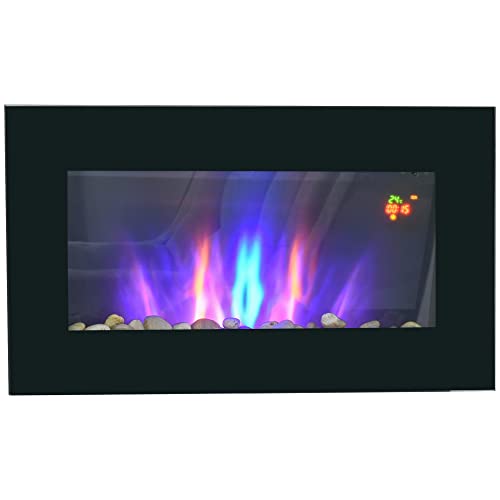The Modern Elegance of Wall Hung Fireplaces
In the realm of modern interior decoration, the wall hung fireplace has become a striking fusion of functionality and looks. These setups supply warmth and ambiance while serving as a smooth focal point in various settings, consisting of homes, offices, and dining establishments. With numerous designs and innovations readily available, wall hung fireplaces deal with varied tastes and needs. This post dives into their benefits, different types, installation considerations, and maintenance suggestions, together with an extensive FAQ area to address typical questions.
The Appeal of Wall Hung Fireplaces
The growing appeal of wall hung fireplaces can be associated to several elements:
- Space-Saving Design: Ideal for smaller sized locations, wall hung units free up floor space, optimizing space designs.
- Smooth Aesthetics: Known for their modern-day appearance, these fireplaces enhance the general design of a room, offering a modern touch.
- Adaptability: They can be set up in various spaces, consisting of living rooms, bed rooms, and outdoor areas.
- Relieve of Installation: Many designs are developed for much easier installation compared to conventional fireplaces.
- Fuel Options: Available in electric, gas, and bioethanol versions, consumers have the versatility to select based on choice and usefulness.
Table: Comparison of Different Types of Wall Hung Fireplaces
| Type | Fuel Source | Setup Complexity | Upkeep Needs | Performance | Visual appeals |
|---|---|---|---|---|---|
| Electric | Electric | Low | Very little | High | Smooth, modern-day design |
| Gas | Natural gas or lp | Moderate | Routine maintenance required | High | Standard to modern |
| Bioethanol | Bioethanol fuel | Low | Minimal | Moderate | Trendy and varied |
Kinds Of Wall Hung Fireplaces
1. Electric Wall Hung Fireplaces
Electric models are the easiest to install and typically need just a basic electrical outlet. They make use of LED innovation to produce practical flames, while their heating capabilities can efficiently warm a room. Many electric fireplaces included adjustable flame settings and remote controls, enabling personalized atmosphere.
2. Gas Wall Hung Fireplaces
Gas systems use a genuine fire experience with real flames. They can be vented or ventless, with vented models needing setup of a chimney or flue. Gas fireplaces require a greater level of installation knowledge, and routine maintenance is essential for safe operation.
3. Bioethanol Wall Hung Fireplaces
These environmentally friendly fireplaces make use of bioethanol, a renewable resource source. They do not need a chimney, making them flexible for positioning within a space. However, the flames produced can be unforeseeable in size, and cautious adherence to maker standards is vital for safety.
Setup Considerations
When pondering a wall hung fireplace, it's crucial to consider the list below aspects:
- Location: Choose an area that permits sufficient clearance from flammable materials. Fireplaces ought to preferably be installed on an accent wall to optimize visual impact.
- Structural Support: Ensure the wall can support the weight of the fireplace, particularly for heavier gas models.
- Ventilation Needs: Gas fireplaces need appropriate ventilation to avoid the buildup of harmful gases. Seek advice from an expert concerning the proper venting system.
- Electrical Access: For electric fireplaces, distance to an electrical outlet is important. Concealing wires for a tidy installation boosts looks.
Maintenance Tips
Appropriate maintenance is vital to prolong the life and security of wall hung fireplaces. Secret maintenance tips consist of:
Regular Cleaning:
- Dust and debris can accumulate. Wipe down the unit with a soft, wet fabric.
- Use specialized cleansers for glass surface areas to keep clarity.
Yearly Inspection:
- For gas fireplaces, have a professional check vents and connections annually for safety.
- Check for gas leaks and make sure proper operation of the ignition system.
Fuel Management:
- Ensure the appropriate type and quality of fuel is utilized, particularly for bioethanol designs.
- Keep additional stocks of fuel on hand however save them in a safe place, far from the fireplace.
Pilot Light Monitoring:
- For gas fireplaces, routinely check that the pilot light is lit and functioning.
Frequently asked questions
Q1: Are wall hung fireplaces safe to use?
A1: Yes, when set up and utilized according to producer standards, wall hung fireplaces are safe. Regular upkeep and examinations contribute to safe operation.
Q2: Can wall hung fireplaces be utilized in apartments?
A2: Absolutely. www.fireplacesandstoves.uk and bioethanol designs are particularly matched for houses, as they do not need substantial venting.
Q3: How much do wall hung fireplaces cost?
A3: Prices can differ substantially based upon the type, brand, and functions. Electric fireplaces might begin around ₤ 300, while gas designs can range from ₤ 1,000 to over ₤ 5,000, depending on setup complexity.
Q4: Do wall hung fireplaces produce as much heat as standard fireplaces?
A4: While they may not generally produce the exact same quantity of heat as standard wood-burning fireplaces, electric and gas designs can successfully warm a space of typical size when utilized appropriately.
Q5: Can I install a wall hung fireplace on any kind of wall?
A5: Most setups require a solid, structural support wall. Constantly consult with an expert to identify if your wall type appropriates for setup.
Wall hung fireplaces represent a modern alternative to conventional heating techniques, integrating performance with modern design. They offer numerous benefits, including space-saving installations and aesthetic enhancement, making them a beneficial option for today's homeowners and designers. With appropriate installation and maintenance, these elegant fixtures can provide warmth and beauty for years to come.

